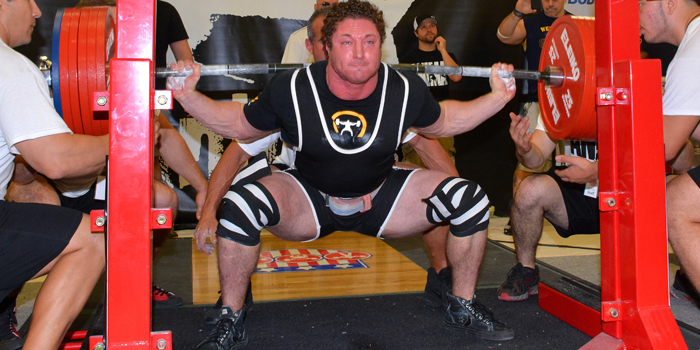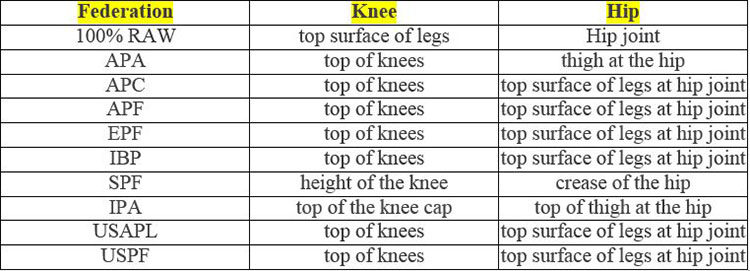
Squat depth may be the only topic in powerlifting more controversial than the use of gear. If we could all drop the word parallel from the conversation, it might help. That will never happen, though, because breaking parallel is how most powerlifting rulebooks define the necessary squat depth.
Brandon Morrison of liftbigeatbig.com, compiled the definition of “passable squat” in ten different powerlifting federations. Most of them are the same, but it’s probably a good idea to have this chart on hand when deciding where to compete:
What Morrison points out is that each powerlifting association uses its own definition. In part, whether or not your squat gets three white or three reds is determined by the wording of the rulebook. Here’s what Morrison has to say about it:
These ten feds use different language to describe their ideal “break parallel” squat. Some describe the “top of knees” while others use the “knee cap.” The depth point at the hip is described as the “top of the legs at the hip,” or “the “crease of the hip” or the “hip joint.” Hips don’t lie.
But despite their use of different terms, they remain pretty consistent throughout, you must break parallel.
One thing that will be the same across all feds is the fact that the line which separates the champ from the chump, the white lights from the red lights and 9/9 from bombing out is an imaginary and invisible line whose axis through disputed points is in the heads of the three individual judges who preside over your lift. No, it’s not perfect; it’s subjective. Deal with it.
Although the hip crease/joint lowering beyond the top of knee may indicate a higher position than the knee cap, they’re all really pretty similar. I mean, you’re down there for like a second. Get your hips low. If you catch a red, make sure to ask the judge who threw it for and explanation… POLITELY.
The rules are the rules are the rules, in the eyes of a good association with reliable judges. None of these rules matter if they aren’t enforced, though. Even if an association’s rulebook clearly demonstrates what constitutes a passable lift, the ruling comes down to whether or not the judges actually follow the book. As it turns out, it is much more difficult for a federation to control the judges adherence to pre-established standards than it is to actually set those standards to begin with. It is easy to say, “do it this way.” It is hard to make that actually happen.
But now we have our definitions. Now we all know what a deep enough squat is. Let’s hope the judges have the same views as their rulebooks.
You can find the full article here.










2 Comments